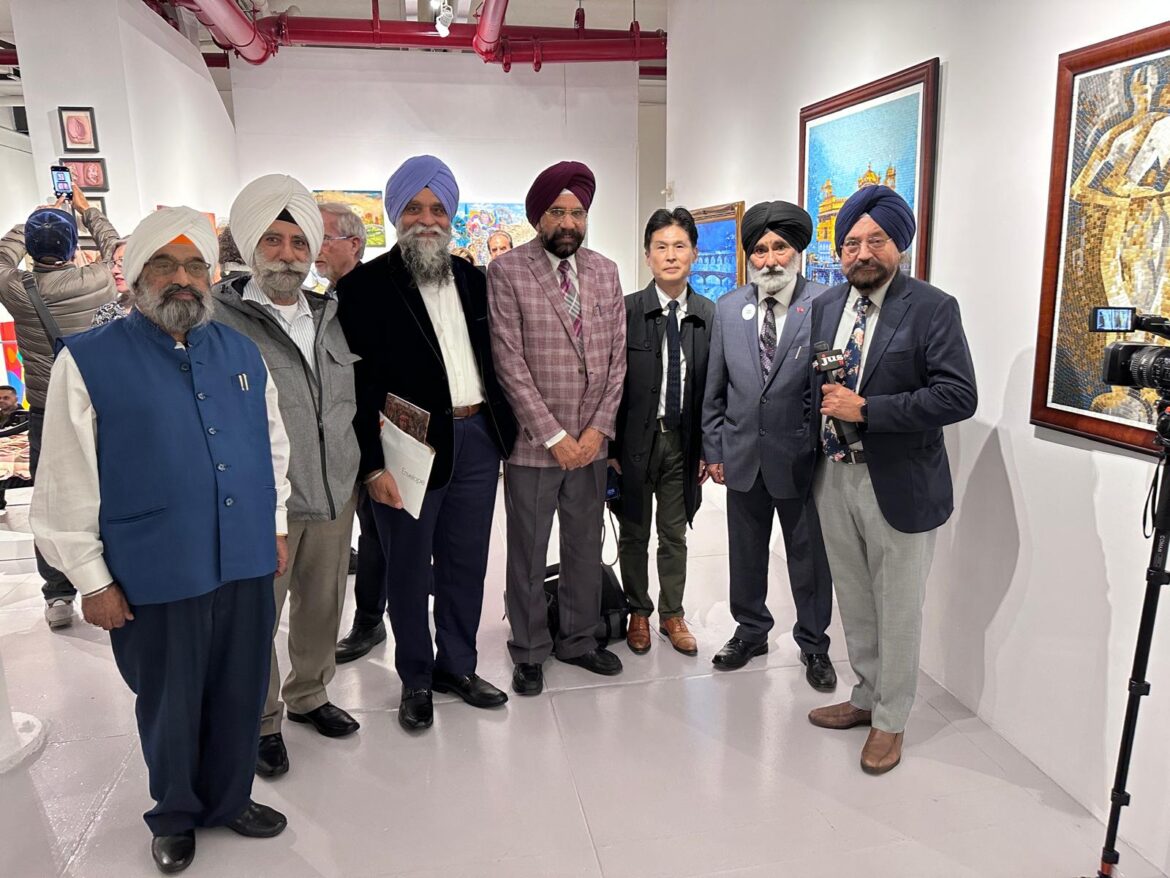You come across mosaics as decoration nowadays, but in medieval times, it was high art, even sacred, the kind you see in churches and the Sistine Chapel. Not many modern artists use this genre as it demands months of painstaking labor that only artisans are used to.
Harjeet Sandhu is made of harder stuff. He doesn’t mind getting his fingers chipped and his hands callused, setting tiny pieces of stone or glass on a hard surface like wood. He will readily tell you he once worked in a stone-cutting factory and set shop as a sign painter in New York City. No shame here – MF Hussain once painted movie hoardings.
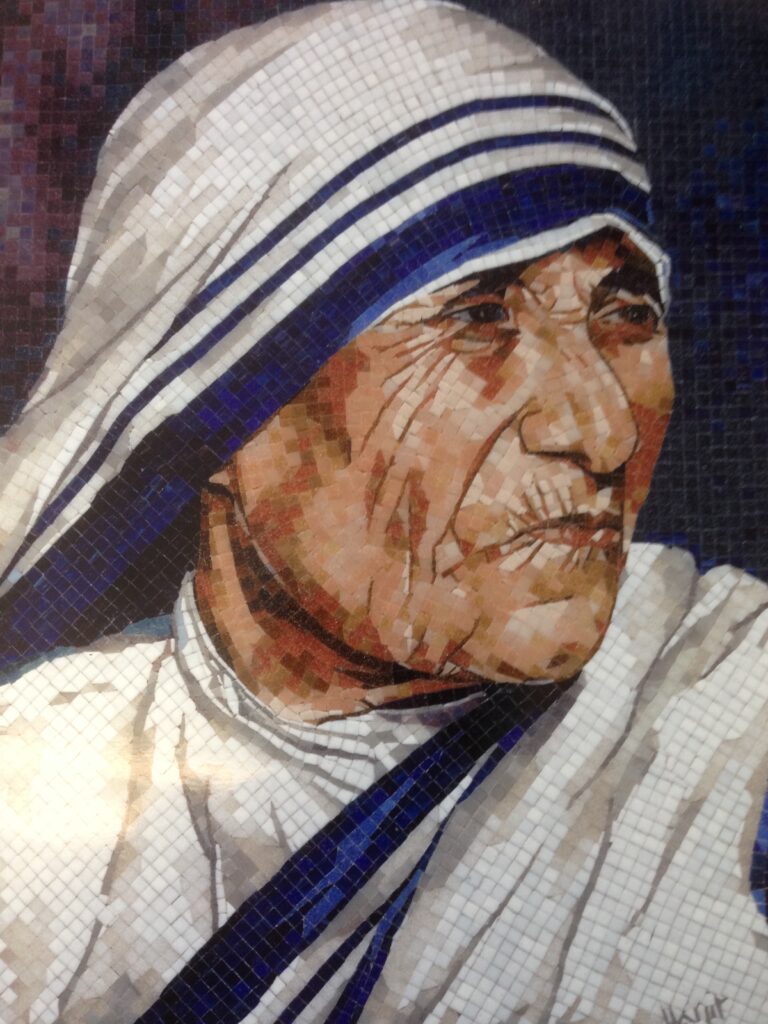
What has brought Harjeet Sandhu fame and some fortune late in life is that he has fused his life’s experiences and background in painting and sculpture to create sublime art in mosaics. His work has been exhibited internationally, including at the AIFACS, Punjab Lalit Kala Akademi, Sikh Heritage Museum of Canada, Agora Gallery, and Ditra Gallery in New York.
Proud of his Sikh heritage and roots in Punjab, Sandhu is also inspired by his surroundings. He creates art with deep cultural and social significance, and above all, his vibrant creations express powerful emotions through glass.
Sandhu has risen above his earlier figurative works in his latest mosaic, ‘Ik Onkar’, which symbolizes the oneness of God and humanity. His simplicity of line depicting the highest teaching of Sikhism and expressiveness evoking the form of Guru Nanak Dev has made the work a cynosure of many galleries, as it can easily carry a six-figure price tag. But he is not ready to part with it. He has captured the essence of the Sikh mool mantra because he recites the bani of the Guru and meditates to absorb his soul.
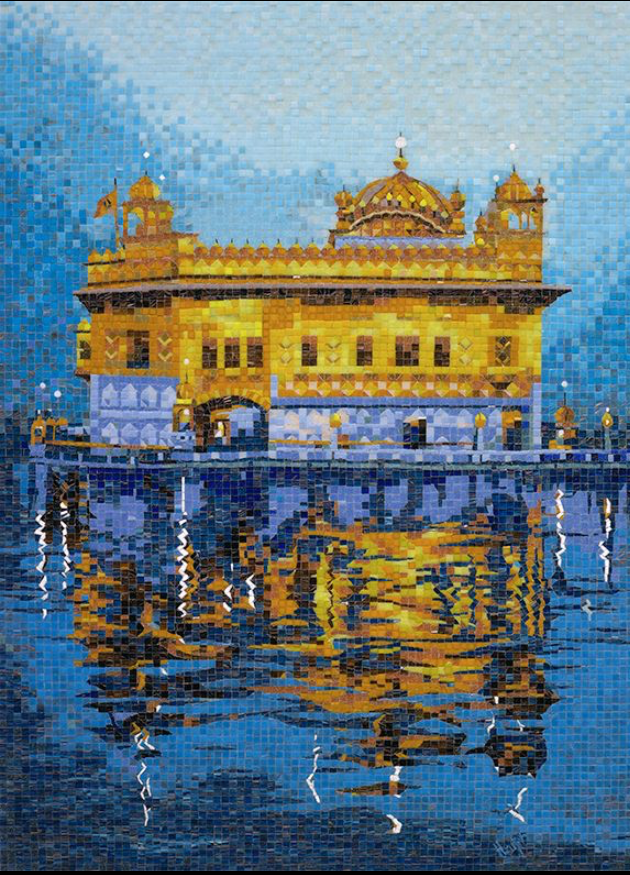
Sandhu also bows to the Golden Temple replica in his house in Queens every day. So, it was natural for him to convey the supreme spiritual significance and unique architecture of Harmandir Sahib envisioned by Guru Arjan Dev in various tones of nectar in mosaic. Comments Prof. Saroj Rani, former Chairperson, Department of Fine Arts, Punjabi University, Patiala, “Each piece of mirror recites shabad and chants the glory of the Almighty. There is bliss in the reflection of the temple in the Sarovar. The plinth, parapet, pillars, arches, gumbads, and minarets are perfect, as if Lord Vishvakarma himself built them.”
Initially, Sandhu created mosaic portraits of US presidents and personalities, such as the then NYC mayor, Michael Bloomberg. As a result, he was profiled in local papers and on TV.
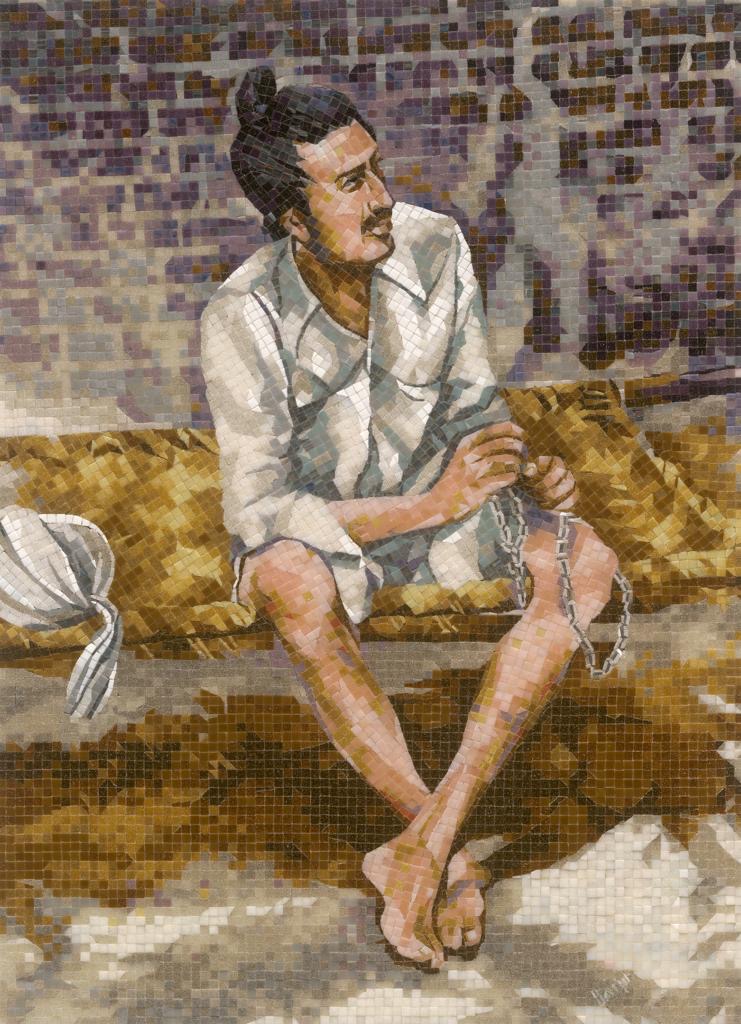
But he is inspired by the philosophy and sacrifices of Indian freedom fighters, Bhagat Singh in particular. He portrayed the revolutionary sitting on the charpoy. What Prof. Saroj Rani sees in this artwork is: “Bhagat Singh’s body is burning with the fire of patriotism. His sharp eyes explain to you, ‘Why am I an Atheist?’ His facial expression conveys, ‘Life is lived on one’s strength, others’ shoulders are used only for carrying the coffin.’ You sense as if Sandhu was present in the cell recording the dialogue of Bhagat Singh when he refused to bear the handcuff.”
His portrait of Mother Teresa shows her dark, deep-set eyes and serious intent. The small pieces of mirror of many shades of white of her blue-bordered signature sari say, “I must leave the Convent to help the poor and live among them.” Her glowing eyes convey, “Let every action of mine be something beautiful for God.” The peace and silence of the portrait stays with you.
Born in Faridkot, Sandhu imbues his art with the fragrance of Punjab. His portrait of Baba Farid, the resident saint of Faridkot, proclaims that he is a Sufi who will not bow to the dictates of any clergy. A museum in India has acquired the portrait.
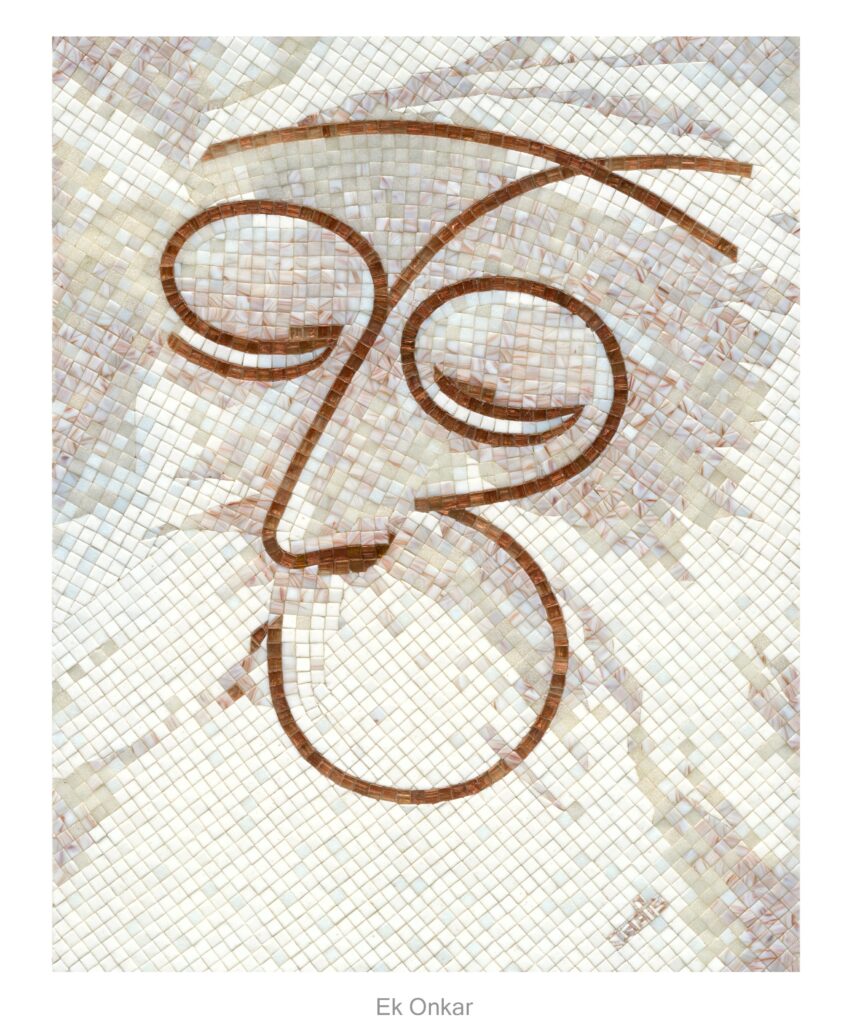
Sandhu earned a master’s in fine art from Panjab University and was awarded North India’s best sculpture in “Head Study from Concept.” He sketched numerous images of motherhood in clay he collected from the pond in his village. He also painted landscapes in water and oil. But after moving to the US in 1985, he had to put aside his passion for art to provide for his family. His industriousness made the sunshine on the family—his son is a lieutenant level officer in the NYPD.
Picking up his mosaic-making tools of pliers, chisel and sander, Sandhu started devoting himself to mosaic art in 2010. Mosaic is defined as a pattern produced by arranging together small colored pieces of hard material, such as stone, tile, or glass.
Sandhu has since held solo exhibitions, won many laurels, and has been the subject of a coffee table book.
He is working on a 4 ft by 6 ft portrait of Banda Bahadur, the valorous Sikh warrior who overthrew the Mughal empire’s tyranny.


